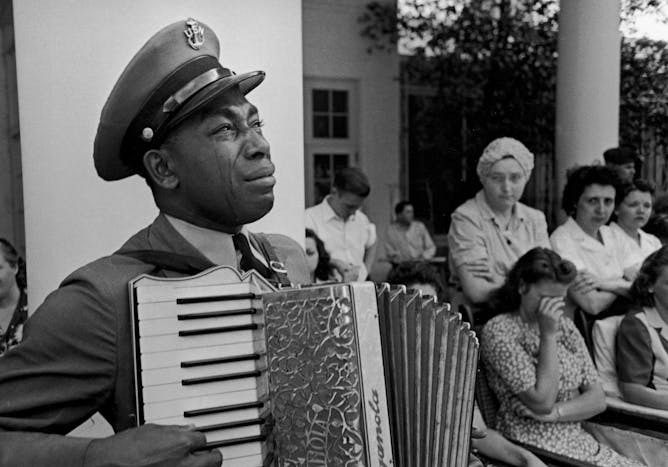|
It’s hard to hear the story of Graham Jackson without feeling some sort of emotion. That’s part of the reason scholar David Cason spent five years researching Jackson’s life.
As one of the first Black musicians to play on national radio, Jackson is best known for the April 13, 1945, photograph of him mourning the death of President Franklin Delano Roosevelt. But that image was only part of Jackson’s story. Through his research, Cason was able to document the ugly racial realities that Jackson and other Black Americans faced throughout the 20th century.
Though his specialty is teaching civil rights and social justice, Cason is unsure if he can tell Jackson’s complete story under a proposed law in North Dakota, where he is an assistant professor, that would make it illegal to teach anything that might make students feel guilt, anger or shame.
As Cason details here, the story of Jackson “involves all of these things.”
Also today:
|

|
Howard Manly
Race + Equity Editor
|
|

Chief Petty Officer Graham Jackson mourns the death of Franklin Delano Roosevelt on April 13, 1945.
Edward Clark/Life Magazine
David Cason, University of North Dakota
Jackson used his musical talents to overcome racial barriers in the United States. But telling Jackson’s story may not be legal under proposed laws restricting how race is taught.
|
Education
|
-
John Patrick Hunt, University of California, Davis; Celeste K. Carruthers, University of Tennessee
An estimated 40 million borrowers could be affected by a pair of cases before the Supreme Court that could block the Biden administration’s plan to cancel student debt.
|
|
Health + Medicine
|
-
Corinna Jenkins Tucker, University of New Hampshire; Tanya Rouleau Whitworth, University of New Hampshire
All brothers and sisters have tensions or disagreements from time to time as they jockey for position in the family. But when one sibling victimizes another, there can be serious and ongoing harms.
-
John B. Williamson, University of Florida
Sen. John Fetterman’s admission to a hospital for mental health treatment has set off an important national discussion about the need to reduce stigmas around mental illness.
|
|
Politics + Society
|
-
Olayinka Oyegbile, Trinity University, Lagos
Bola Ahmed Tinubu emerges winner of a disputed 2023 presidential election.
|
|
Economy + Business
|
-
Stephen J. Silvia, American University School of International Service
The presidential runoff vote count starts March 1, but results already in from the first direct leadership election in the UAW’s 88-year history present a sharply divided board.
|
|
Ethics + Religion
|
-
Risa Aria Schnebly, Arizona State University; Ben A Minteer, Arizona State University
Two conservation scholars break down what de-extinction looks like – and the debate over whether it could do any good.
-
Christopher H. Evans, Boston University
A historian highlights the role of Frances Willard, who helped found the Woman’s Christian Temperance Union, one of the major social movements of the 19th and 20th centuries.
|
|
Science + Technology
|
-
Andrea Merchak, University of Virginia
The gut microbiome plays a big role in mediating how the immune system responds to perceived threats, which include the body’s own nerves.
|
|
Arts + Culture
|
-
Ted Olson, East Tennessee State University
Doc Watson’s popularity and influence came from his virtuosic guitar playing, powerful voice, broad musical taste, folksy storytelling and lack of pretense.
|
|
|
|
|
|
|
|
| |
| |
| |
| |
|
|